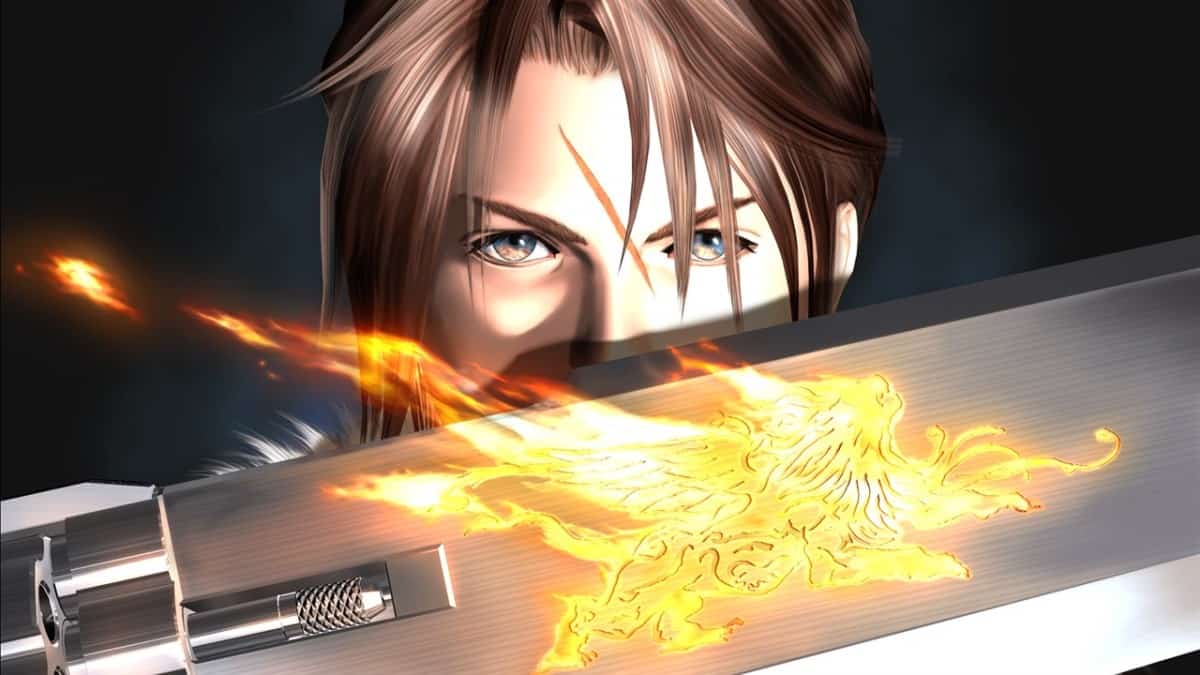Every Character and Enemy will have certain statistics, or “Stats,” that pertain to certain properties that affect their performance in combat in Final Fantasy VIII. The characters’ combat performances are also affected directly and indirectly by EXP and AP.
Stats
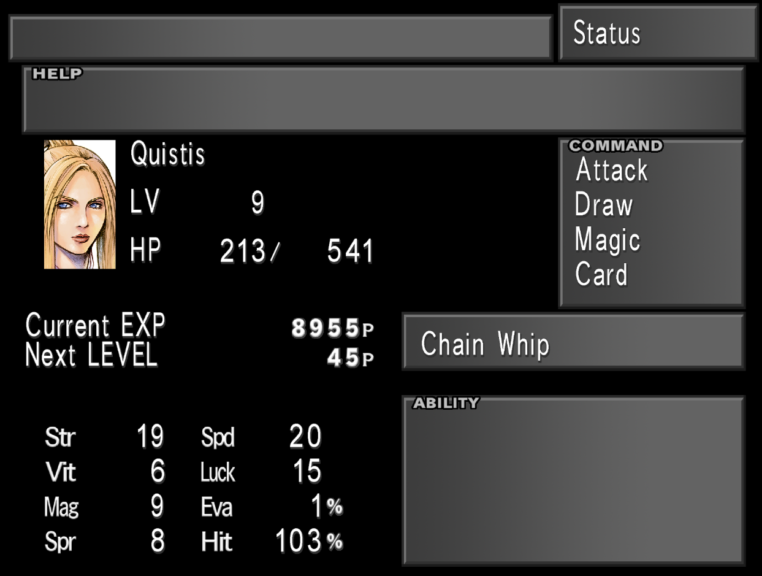
The different types of these stats are:
- Hit Points or “HP” – This number denotes how much damage a combatant can take. When a combatant receives damage, they lose HP. When a combatant is at 0 HP, they are dead or KO’d. In the case of player characters, this means they need specific items, magic, or abilities used on them to revive them (e.g. Phoenix Down, Life, Revive, etc.)
- Strength or “Str” – This number corresponds to a combatant’s Physical Damage. The higher a combatant’s Str, the higher the physical damage they will inflict on a target when they Attack.
- Vitality or “Vit” – This number corresponds to a combatant’s Physical Defence–the extent they can defend from Physical Damage. The higher the combatant’s Vit, the less physical damage they will take.
- Magic or “Mag” – Mag corresponds to a combatant’s Magical Damage as well as HP recovered from Curative spells. It also determines how easily a character can draw magic. The higher the combatant’s Mag, the more Magical Damage they will inflict and the more HP they will recover with Curative Spells.
- Spirit or “Spr” – Spr corresponds to a combatant’s Magical Defense. The higher the combatant’s Spr, the less Magical Damage they will take.
- Speed or “Spd” – Spd corresponds to how quickly the combatant’s ATB gauge fills. The higher the combatant’s Spd, the faster their ATB gauge will fill and the more turns they will be able to take.
- Evasion or “Eva” – This number corresponds to the chance a combatant has to evade Physical Attacks. The higher the combatant’s Eva percentage, the higher the chance the combatant will evade the physical attack. Note that 100% Eva doesn’t indicate a 100% chance of evading an attack. The attacker’s Hit and both the combatant’s and the attacker’s Luck is also factored in a combatant’s chance to evade.
- “Hit” – Hit corresponds to the combatant’s chance of successfully hitting a target with a Physical Attack. The higher the combatant’s Hit percentage, the higher the chance the character will successfully hit their target with a physical attack. At 255% the combatant is guaranteed to hit their target but any lower and the chance to hit will also be subject to the target’s Eva and both the combatant’s and the target’s Luck.
- “Luck” – This stat corresponds to a few different variables. Firstly, the higher the Luck stat, the higher the chance that the combatant will inflict a critical attack instead of a normal physical attack. Secondly, Luck also affects both the chance the combatant will hit their target with a physical attack and the chance the combatant will evade an oncoming physical attack. The higher the combatant’s Luck, the more likely the combatant will hit their target and the more likely the combatant will evade an oncoming attack.
You can view a character’s stats on the Junction screen and on the Status screen on the Menu.
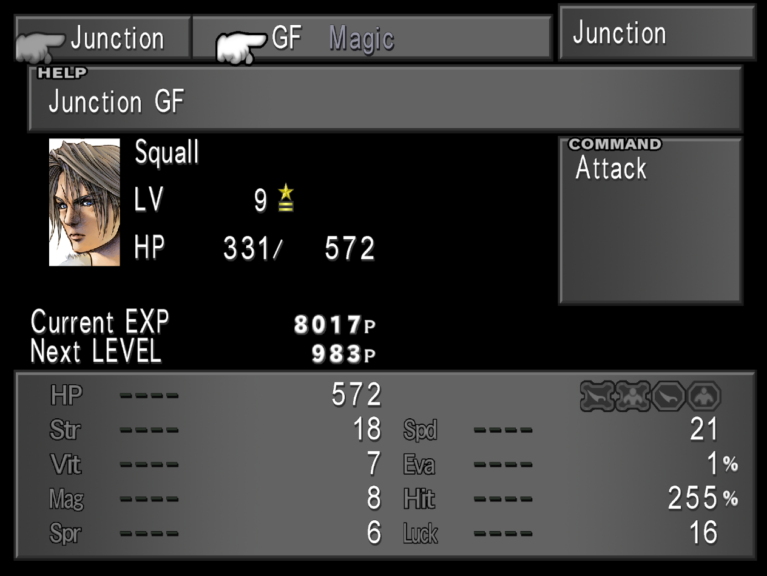
These stats can be increased for the characters in these ways:
- Junctioning Magic to Stats
- Using certain Items
- Using certain character abilities
- Remodeling weapons (this only increases Str)
You can also increase a character’s stats by leveling up. However, your enemies’ levels will scale with the average level of your three active party members. This means that without junctioning magic to your stats well enough, your enemies will become more challenging as their stats become higher. They will also have access to more powerful commands at higher level ranges. That said, higher-level enemies will also drop more valuable items and have more powerful magic that can be drawn from them. This in turn allows your characters to be more powerful via junctioning.
EXP and AP
EXP (or “Experience Points”) is gained after battle by defeating or damaging enemies. Once acquired, EXP contributes to your character’s Levels which in turn contributes to your character’s stats. The same amount of EXP that each character obtains is also divided amongst the GFs that are junctioned to them. Note that Bosses don’t give EXP.
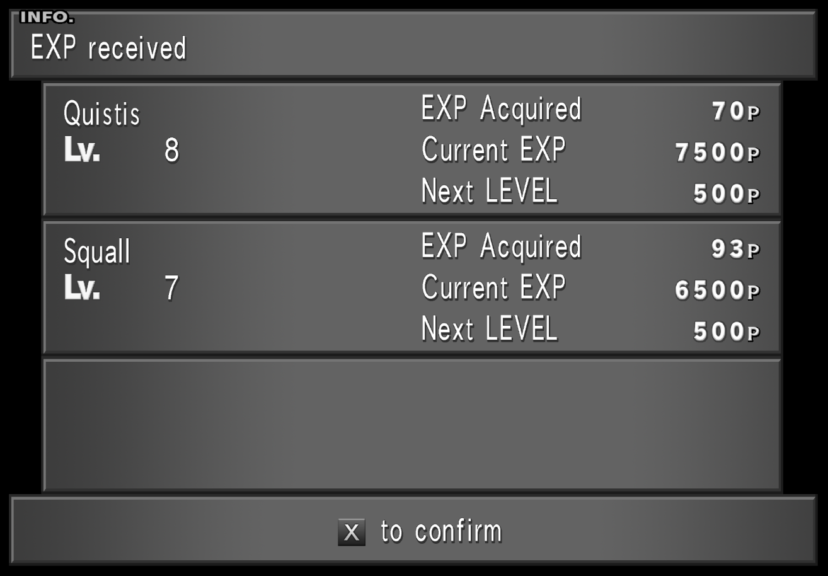
The level of most enemies scales to the average level of your active party. This means that the higher the average party level, the higher the level of your enemies. Higher-level enemies can also use new commands. This makes them more challenging if you are not setting up your junctions optimally.
However, higher-level enemies can also drop rarer items and can have more powerful magic drawn from them. There are ways of minimizing EXP gain if you want the enemies to be at their lowest level possible.
Note that mandatory boss encounters are level capped which means they will only scale to the average party level to a point. Beyond this point, they will stay at the same level whilst your characters gain levels. Optional Bosses levels will scale as normal to the max level 100.
AP
AP (or “Ability Points”) are obtained after every battle and contribute to GF’s learning abilities. It’s recommended that you manually select the abilities your GF learns in the menu.
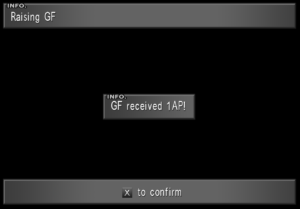
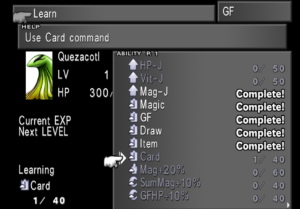
The AP displayed at the end of a battle is given to each GF; it is not divided up like EXP. Note that once a GF has learned an ability after a battle, the remaining AP does not carry over. This means that abilities that are close to being learned are better off being fully learned before entering boss battles. This is because boss battles often yield large amounts of AP.
You cannot receive AP or dropped items if you flee a battle and you will receive EXP based on the proportion of damage you inflicted on each enemy prior to escaping.
Compatibility
Compatibility is a stat a character has in relation to each GF that relates how fast they can be summoned as shown by how quickly the blue gauge depletes. The higher the Compatibility, the faster the GF will be summoned. If they can be boosted with the “Boost” ability, then their damage will be further increased. Compatibility can be increased by summoning the GF, using specific items, and using certain spells. The highest compatibility a character can have with a GF is 1000 whilst the lowest is zero.
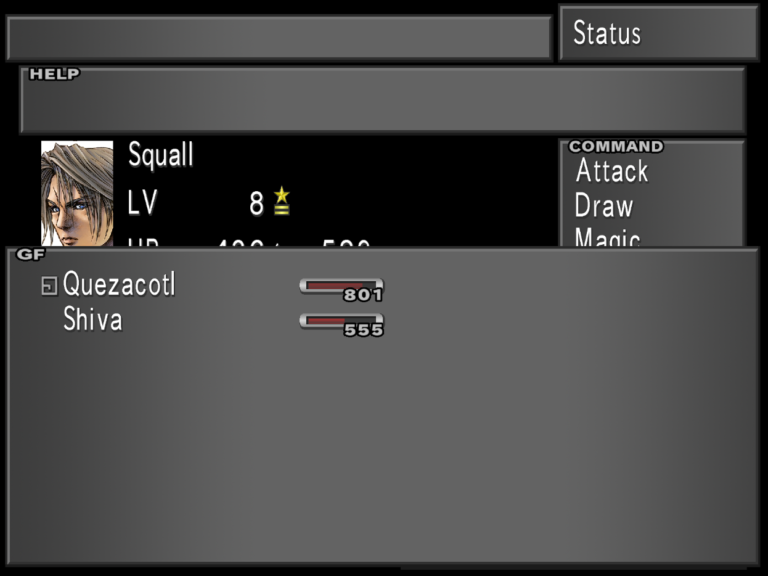
However, compatibility can also decrease in the same manner. One command that will raise compatibility with one GF, will likely lower it with another. This often corresponds to the element a GF is associated with. For example, casting Blizzard will raise the character’s compatibility with Shiva but lower the character’s compatibility with Ifrit.
You will be able to deal more damage than GFs as the game progresses, with proper junctioning. Therefore, you will ideally be summoning most GFs less and less as the game goes on. Additionally, changes in compatibility are often fairly incremental without the use of certain items, which can instead be refined for large stocks of magic. It is therefore reasonable to disregard compatibility in most scenarios, in favor of being able to use magic and refine items freely.


